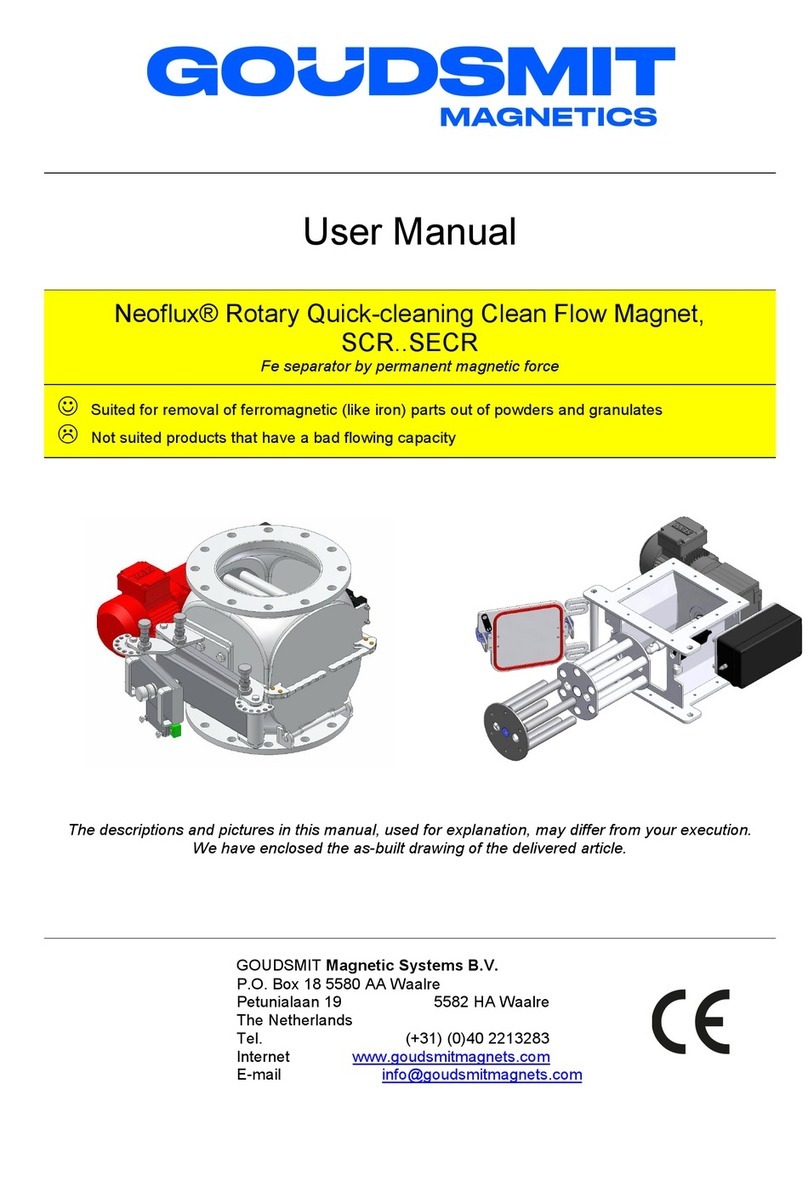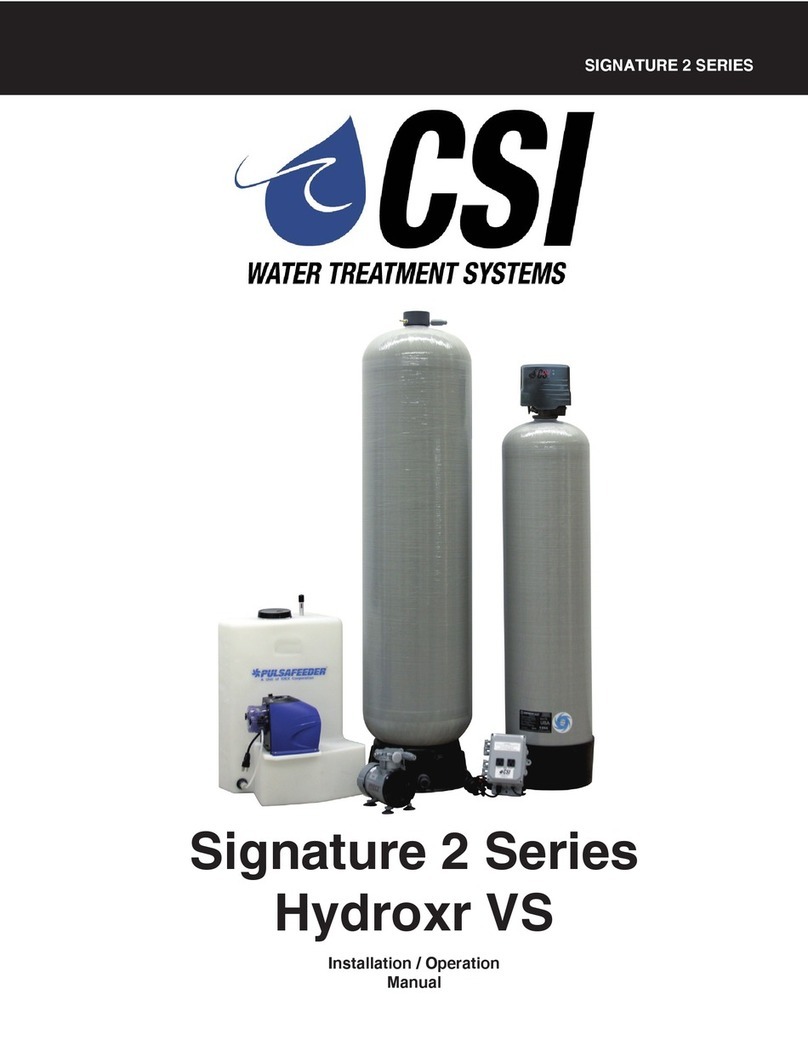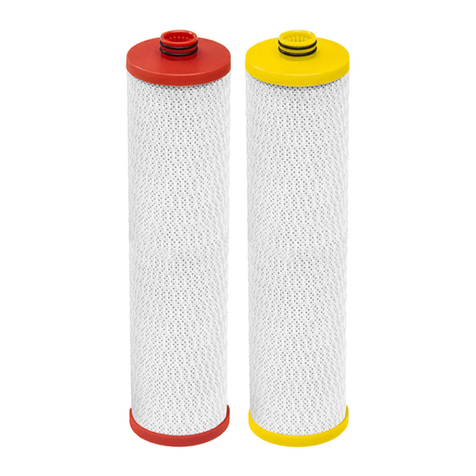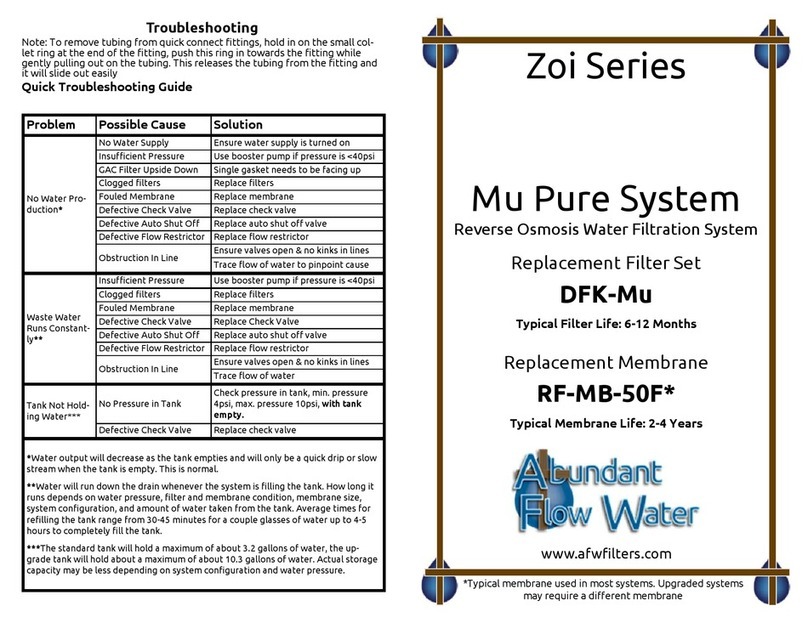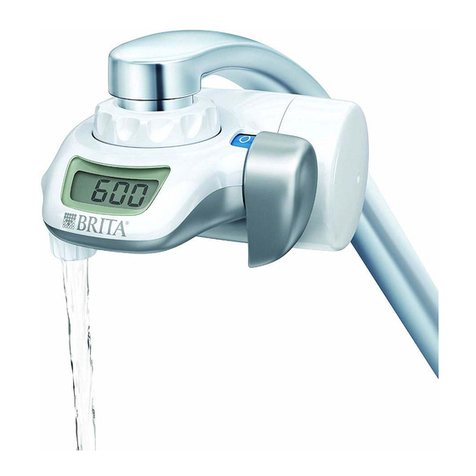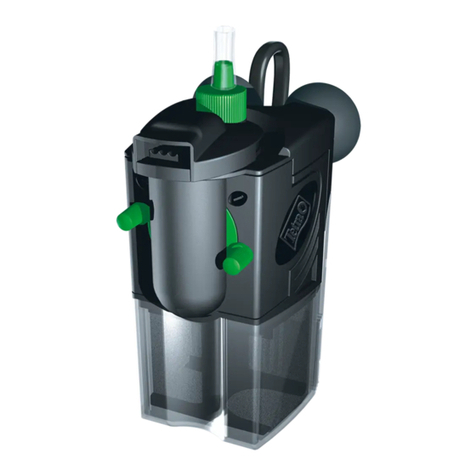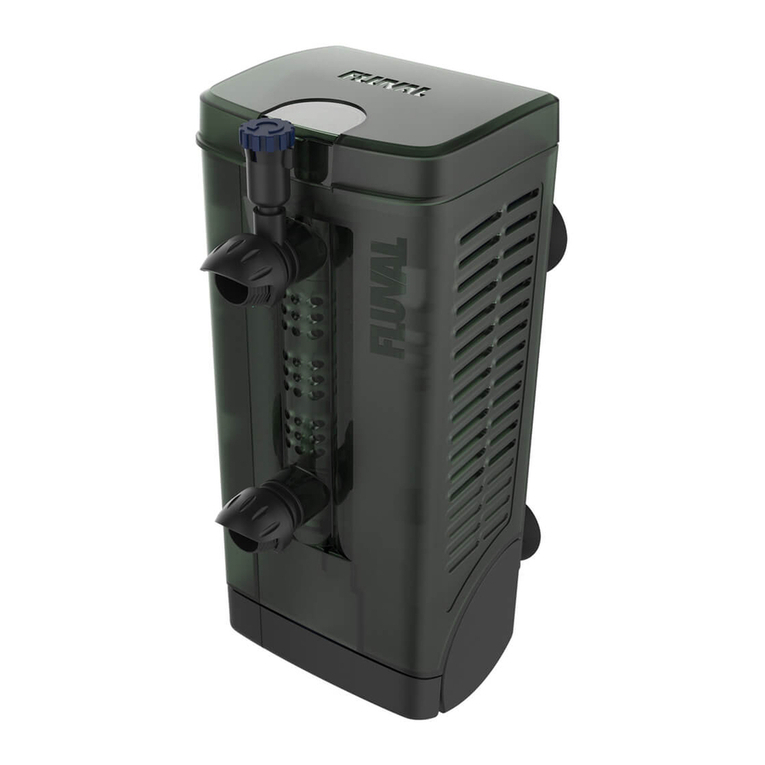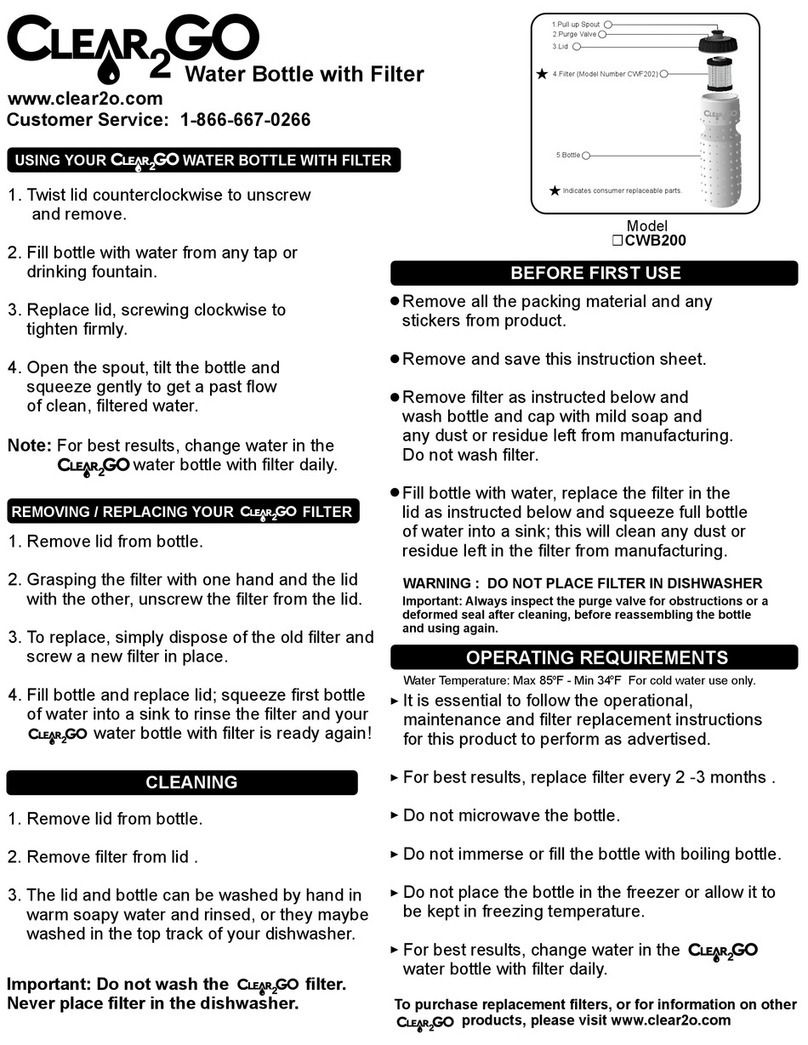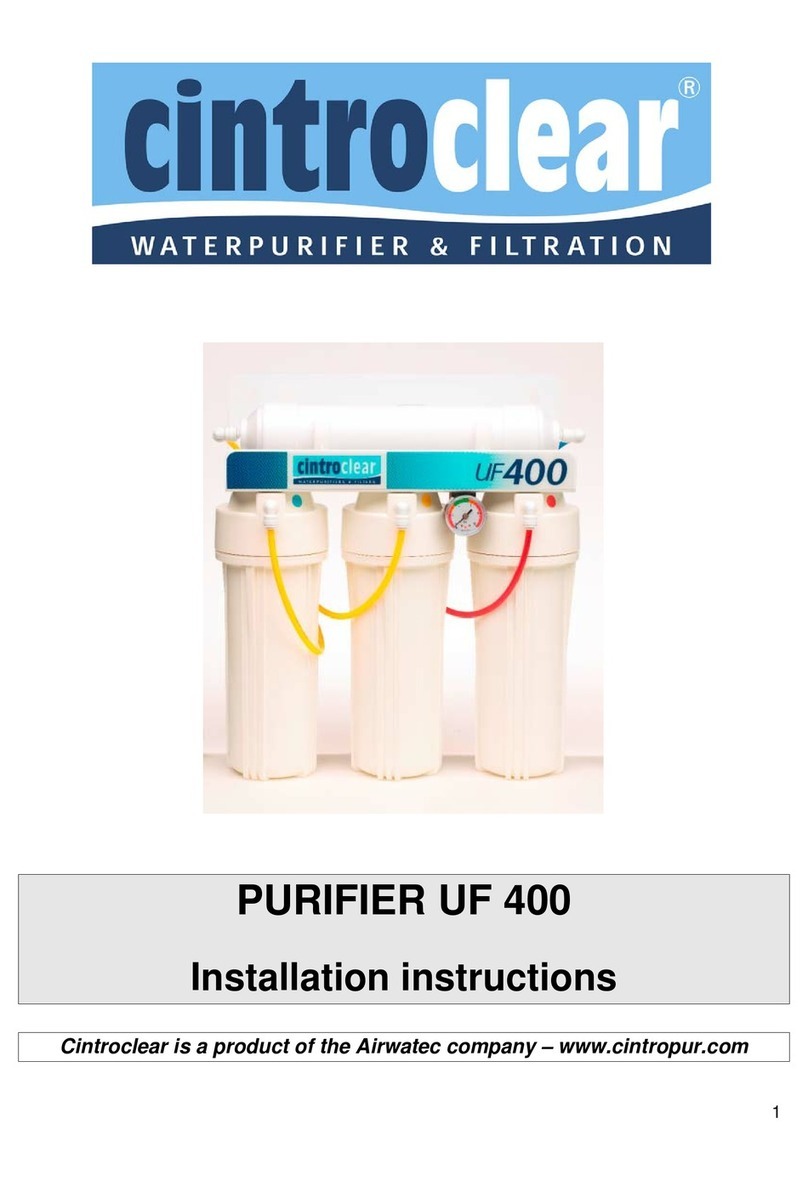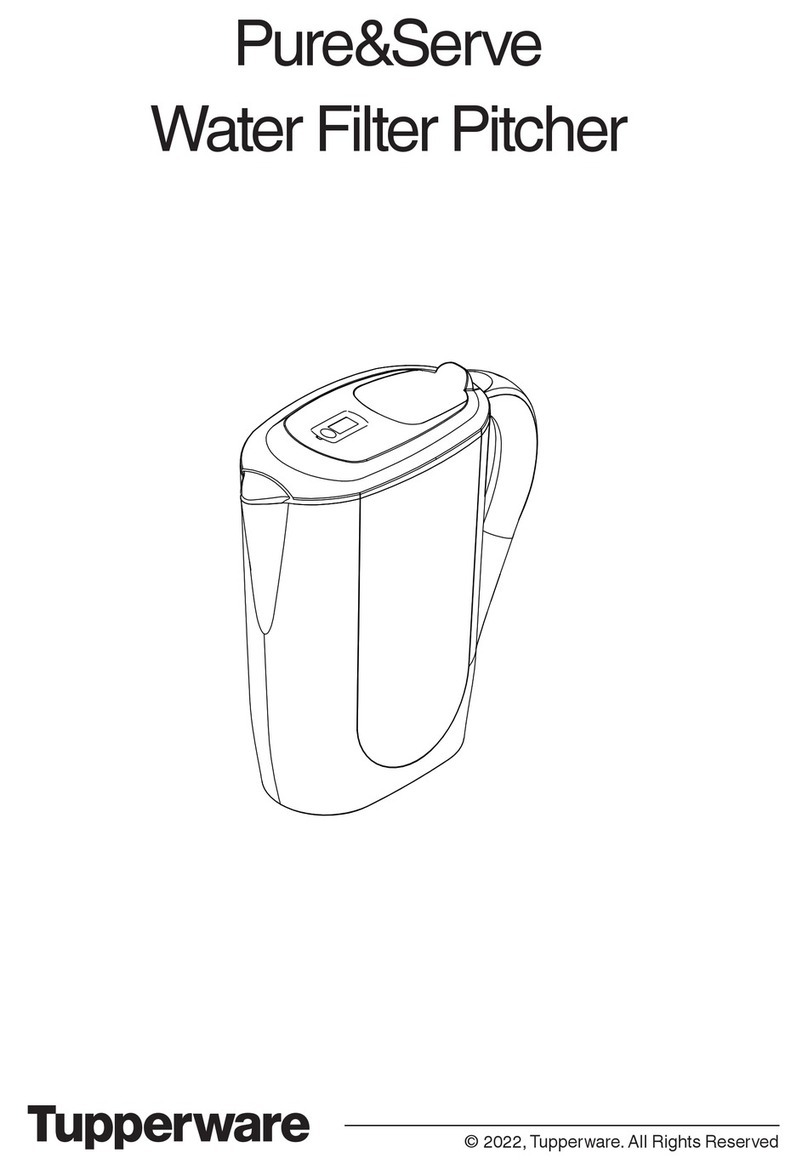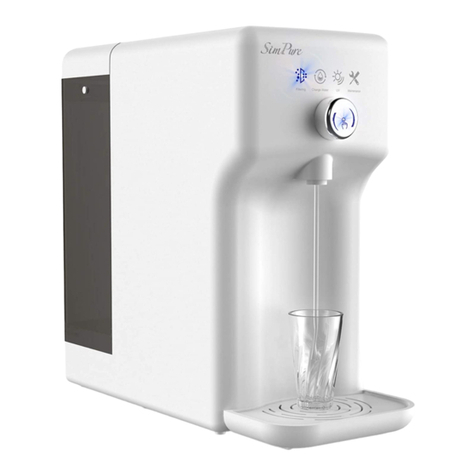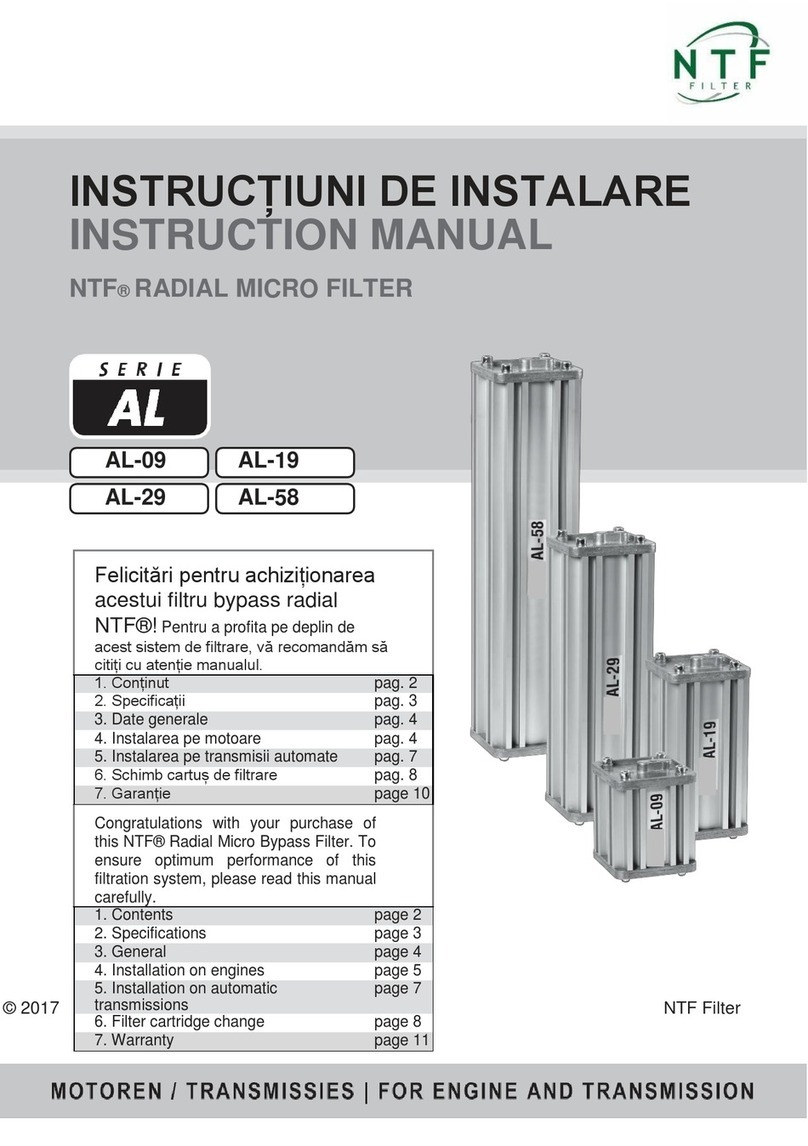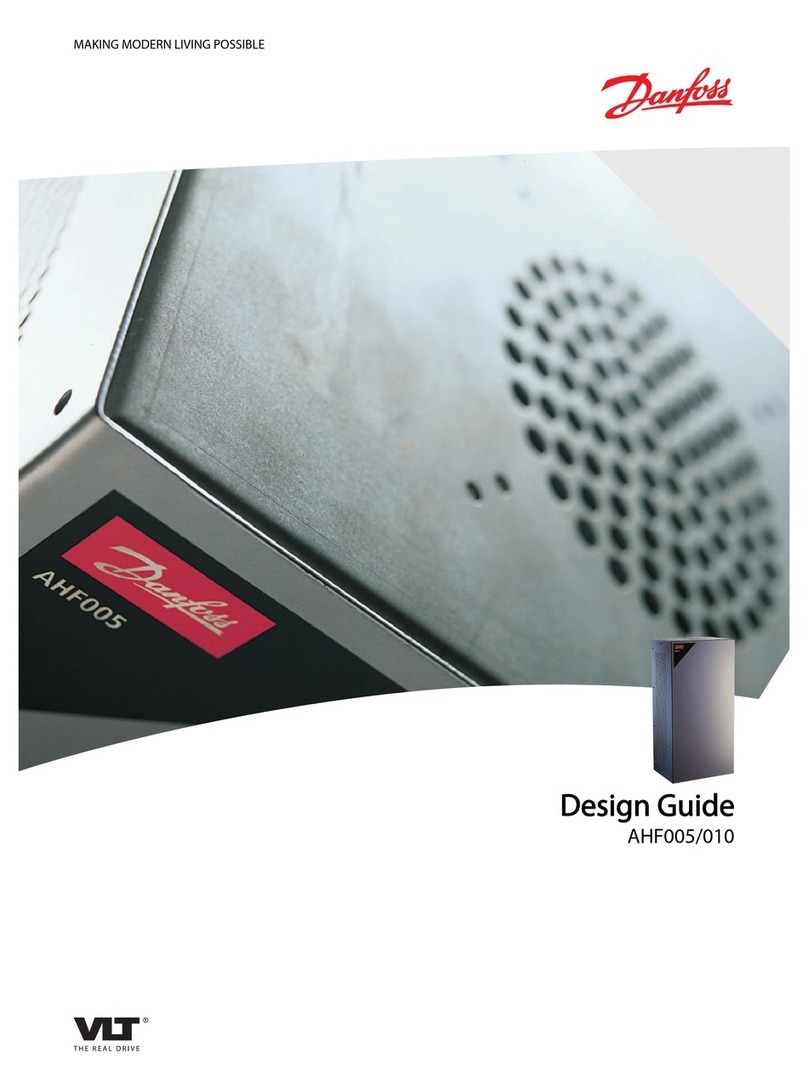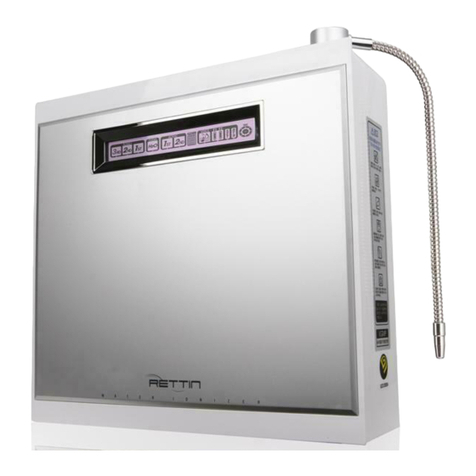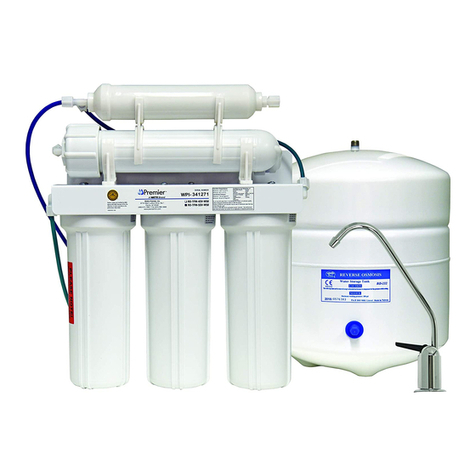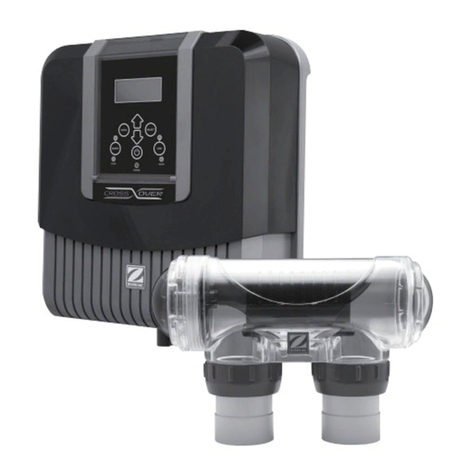Goudsmit S NF Series User manual

Installation and user manual
Non-ferrous separator, series SxNF & RNFx
according the Eddy current principle
Suited for removal of non-ferromagnetic metal particles from dry, well spread-out product flows.
Not suited for sticky or wet/fluid products and or surroundings.
The descriptions and pictures in this manual, used for explanation, may differ from your machine.
We have enclosed the as-built drawing of the delivered article.
GOUDSMIT Magnetic Systems B.V.
P.O. box 18 5580 AA Waalre
Petunialaan 19 5582 HA Waalre
The Netherlands
Tel.: (+31) (0)40 221 32 83
Internet: www.goudsmitmagnets.com
E-mail: info@goudsmitmagnets.com

Disclaimer
Page 2
Disclaimer
© Copyright 2019, Goudsmit Magnetics Group B.V..
All rights reserved.
This manual is protected by copyright.
It is prohibited to copy any content, images or other components it contains.
This manual may not be duplicated in any manner whatsoever and may not be transmitted and/or made
available on a network, except with the prior written permission of Goudsmit Magnetics Group B.V..

Version overview of standard manual
Page 3
Version overview of standard manual
Version overview
Version
Date
Description
1.0
02-2006
First version.
1.1
06-2007
1. Complete renewed version in general Goudsmit user manual style.
2. Control part rewritten to current situation.
1.2
08-2007
Updated after comparison of English, Dutch and German manuals.
1.3
05-2008
•Remarks added regarding high speed bearing grease for SNL bearing blocks of the magnet
roller.
•Chapters “Maintenance/Bearing systems” and “Maintenance/Motor-reductor changed”.
2.0
10-2009
Specifications sheet and declaration by the manufacturer separated from manual.
3.0
04-2013
HPC controller and maintenance sections updated.
3.1
07-2013
General revision.
3.2
09-2014
Maintenance and lubrication updated.
3.3
07-2015
General revision.
3.4
07-2016
Update.
3.5
10-1017
Addition drum section.
4.0
08-2018
Added belt replacement, added disclaimer and general update lay-out.
Translated to Nl, Fr and De.
4.1
02-2019
HPC controller replaced by Sigmatek controller

Introduction
Page 4
Introduction
Read this manual and make sure that you fully
understand its contents before commissioning and
operating the machine.
If you have any queries or require further explanation
regarding any subject related to the machine, please
do not hesitate to contact GOUDSMIT Magnetic
Systems B.V.
All technical information contained in this manual,
together with any relevant drawings and technical
descriptions we supply, remain our property. It may
not be duplicated or disclosed without our prior written
permission.
The user manual can be ordered together with the
device description and/or the article number as well
as the order number (ORxxxxxx).
•This manual and the declaration by the manufacturer are part of the machine.
•They must remain with the machine, even if it is sold.
•The manual must be made available to all operators, service technicians, and
others who work with the machine throughout its life cycle.

Table of contents
Page 5
Table of contents
Disclaimer .................................................................................................................................................................................2
Version overview of standard manual.....................................................................................................................................3
Introduction...............................................................................................................................................................................4
Table of contents ......................................................................................................................................................................5
General ......................................................................................................................................................................................6
Ferromagnetism ...................................................................................................................................................................6
Conditions of supply and warranty ........................................................................................................................................7
Delivery ................................................................................................................................................................................8
General ..........................................................................................................................................................................8
Identification plate ..........................................................................................................................................................8
Safety.........................................................................................................................................................................................9
General ................................................................................................................................................................................9
Danger of magnetic field.....................................................................................................................................................10
Moving parts.................................................................................................................................................................11
Parts pointing out .........................................................................................................................................................11
Falling parts..................................................................................................................................................................11
Danger of high voltage........................................................................................................................................................12
Lock Out Tag Out (LOTO) ............................................................................................................................................12
Device description ..................................................................................................................................................................13
Intended use/user instructions ............................................................................................................................................13
Deliverable specials............................................................................................................................................................14
Drum Magnet – Principle of Operation ................................................................................................................................15
Drum Magnet (Re-)Adjusting the magnet segment .......................................................................................................16
Eddy current principle...................................................................................................................................................17
Sensitivity of metals for Non-Ferro (Eddy current) separation .......................................................................................18
Sigmatek touchscreen control.......................................................................................................................................19
Emergency stop ...........................................................................................................................................................21
Construction NF separator..................................................................................................................................................22
Non-ferro (NF) separator ..............................................................................................................................................23
Installation...............................................................................................................................................................................24
Construction parts ..............................................................................................................................................................24
Placing, transporting or moving the device..........................................................................................................................24
Installation safety................................................................................................................................................................25
Changing magnet rotor position ..........................................................................................................................................25
Electrical connections general ............................................................................................................................................26
Conveyor belt .....................................................................................................................................................................27
Mechanically setting the vibratory motor(s) .........................................................................................................................27
Adjusting position of the separation plate............................................................................................................................27
Start-up....................................................................................................................................................................................28
Checks before and during start-up......................................................................................................................................28
Replacement of the fibre glass tube....................................................................................................................................28
Maintenance ............................................................................................................................................................................29
Bearing systems .................................................................................................................................................................29
Greasing with SKF LGMT2 grease ................................................................................................................................29
Motor reductor ....................................................................................................................................................................31
Conveyor belts........................................................................................................................................................................32
Replacing feeder conveyor belt...........................................................................................................................................33
Replacing Eddy current conveyor belt.................................................................................................................................37
Adjusting belt alignment......................................................................................................................................................41
Checking belt tension .........................................................................................................................................................42
Checking belt alignment .....................................................................................................................................................43
Malfunctions/Service ..............................................................................................................................................................44
Spare parts..............................................................................................................................................................................45
Storage and Dismantling........................................................................................................................................................46

General
Page 6
General
This user manual contains information for the correct operation and maintenance of your device. It also
contains instructions to avoid possible injuries and serious damages, and to allow a safe and as trouble-
free functioning of the product as possible.
Read this manual thoroughly before putting the device into operation, familiarise yourself with the
operation and control of the device and follow all instructions precisely.
•The data published in this instruction manual is based on the available information at the time of
delivery. This is issued subject to later amendment.
•We retain the right to amend or modify the construction and/or model of our products at any time
whatsoever, without any obligation to modify any previously supplied products accordingly.
Ferromagnetism
The working principle of the device is based on (Ferro)magnetism.
Ferromagnetism is the effect which certain materials, such as iron cobalt and nickel, will have when
exposed to an externally applied magnetic field.
Materials that remain magnetised when the external magnetic field is removed, are called permanent
magnets. Most magnetic materials lose their magnetism when the external magnetic field is removed.
Most alloys of iron, cobalt and nickel are magnetic.
However, some stainless steel alloys like AISI304 or AISI316 are only slightly magnetic.
Because in most cases it will be Fe parts that will be Ferro-magnetically influenced, we will use the term
‘Fe’ in this user manual when we mean Ferromagnetic material.

General
Page 7
Conditions of supply and warranty
The conditions of supply are the “General Conditions for the supply and erection of mechanical,
electrical and electronic products” (SE01), published by Orgalime, in Brussels.
These conditions can also -if desired- be requested by writing to Goudsmit Magnetic Systems BV, as
also mentioned in our written quotation.
The warranty prescriptions are mentioned in these conditions.
The warranty on your equipment will be void if:
•Service and/or maintenance is not performed in accordance with the instruction manual, or is
performed by servicemen who are not especially trained to do so.
Goudsmit Magnetic Systems BV recommends to have service and/or maintenance performed
by Goudsmit service technicians.
•Modifications are made to the equipment without our prior written permission.
•Non-original parts or non 100% exchangeable parts are used.
•Lubrication products other than those prescribed are used.
•The equipment is used injudiciously, incorrectly, negligently or not in accordance with its intent
and/or purpose (see chapter “Intended use/user instructions”).
All parts that are subject to wear are excluded from warranty!
Other remarks/warnings:
•Only use the device for the application it has been designed for.
(see chapter “Intended use/user instructions”)
•Only use the device if its technical condition is perfect.
•Make sure all protective hoods or inspection covers (including all safety circuits) have
been fitted and are installed in the correct way.
•Make sure that maintenance on the device is appropriate and in accordance with the
instructions provided in this user manual.
•Correct any fault, especially if it can effect safety, before operating the device.
Should you, after a risk assessment, still going to operate the device – alert the operators
and maintenance personnel about the failure and the possible risks.

General
Page 8
Delivery
General
When delivered, check the shipment for:
•Possible damage and/or shortcomings as a result of transport.
If so, ask the transporter to fill in a transport damage report.
•Completeness of the delivery/deliveries, the absence of anything
(additionally) ordered.
Contact GOUDSMIT Magnetic Systems B.V. in the event of any damage and/or mistaken delivery.
Identification plate
On the device an identification plate can be found.
The information is necessary for service.
Keep this plate clean.
Don’t forget to make note of both the Orderline and the Article number in case of breakdowns
or delivery of spare parts.

Safety
Page 9
Safety
Regularly check that all warning pictograms are still present and legible, and clean if necessary.
Make sure that new pictograms are applied at their correct locations if they have been lost or
damaged.
General
The device is provided with safeguards where necessary. Make sure every person who comes in contact
with the device, wears adequate personal protection (overalls, safety glasses, hearing protectors, helmet,
steel-toed safety shoes etc.).
Areas of the device considered dangerous are marked with warning pictograms.
If the device remains easily accessible to persons, then extra safety precautions (e.g. fencing) must be
installed. When safeguards are not possible, make sure clear instructions are given to people using the
device.

Safety
Page 10
Danger of magnetic field
The magnets generate a powerful magnetic field that strongly attracts ferromagnetic (Fe) materials.
Always take into account that these materials may suddenly be drawn towards the magnet, very
powerfully. This applies to steel workbenches and steel tools, but also to Ferromagnetic materials
carried on your person, such as coins in your wallet or your keys. Make use of non-magnetic tools and
workbenches fitted with a wooden worktop and preferably a non-Fe frame (for instance stainless steel).
Always be aware that Ferromagnetic parts will be attracted - even personal items -
if you are closer than 0.3 meter to a magnet.
Danger - strong magnetic field!
People fitted with pacemakers should on no account enter the magnetic field
(within a radius of at least 1 meters).
Prohibited for people with pacemakers!
Credit cards, chip cards, computer disks/tapes, computer screens, watches,
etc. may be damaged or destroyed if they enter the magnetic field (within a radius of at
least 0.5 meter).
Danger for magnetic cards!
!
!
!

Safety
Page 11
Moving parts
The conveyor belt and rollers are safeguarded. When however the protections are removed for cleaning,
inspection, or maintenance, there is danger of getting jammed between these moving (rotating) parts.
Danger
getting jammed between moving parts!
Parts pointing out
The NF separator has an open and moving system, like the conveyor belt and the vibratory feeder. If long
parts should accidentally enter the product flow, or long Fe parts get caught by the magnet roller, then
these parts - or parts clamped between these Fe parts - can point out of the EC installation.
Danger
being hit by moving parts pointing out!
There must never be long parts in the product flow, because this magnetic device is only suited for
small parts and particles!
Falling parts
The moving product towards, on and/or leaving the NF separator, can perhaps accidentally fall off the
device, which then means a danger of falling loads.
Danger
being hit by falling parts!
The above mentioned dangers can cause danger for passing persons. That is why we advise to take extra
precautions, preferably by placing a fence around the NF separator installation. Make sure that
comprehensive directions are given, possibly supplemented by work instructions, part of which could be
formed by this user manual.
For above mentioned dangers we placed no pictograms on the device.
because they should better be on the fence or on the entrance door to the device!

Safety
Page 12
Danger of high voltage
When installing and electrically connecting the device, make sure the activities are performed by qualified
personnel.
Switch off the electrical power supply before performing activities to the device!
Danger – Risk of an electric shock!
Always use the main power switch (on the control box) to switch off the installation in the event of a
dangerous situation.
Do not restore power until the dangerous situation has been resolved!
Lock Out Tag Out (LOTO)
Lock Out Tag Out (LOTO) is an internationally agreed safety procedure to make sure that dangerous
machines are properly shut off, and that they will not be able to be started up again prior to the
completion of maintenance or repair work.
The main switch has two holes in the housing in the OFF-position, it is prepared for LOTO.
LOTO has to be done for every maintenance- or repair activity to the Non-Ferrous separator.
In that way activities can be performed to the device, without any risk for personal injuries.
!

Device description
Page 13
Device description
Intended use/user instructions
Products
The Non-Ferrous separator magnetic installation is suited for separating and regaining non-
ferromagnetic metals, like aluminium and copper, out of non-sticky materials flows.
Fe parts
The NF separator is NOT suited for separating ferromagnetic particles.
GOUDSMIT Magnetic Systems B.V. recommends separation of tin and ferromagnetic materials, before
feeding it through the NF separator. This improves the results of non-ferro separation. Also, feeding a
material flow containing Fe particles over the NF separator, increases wear, especially on the conveyor
belt.
Temperatures
Suited for outside temperatures of -20°C to 40°C.
Suited for product temperatures up to 60°C with (standard) Neoflux®magnets.
The magnet has to be protected against higher temperatures than prescribed, because the magnet will
lose magnetic force (permanent) when exposed to higher temperatures.
Free space
Make sure that there is sufficient free space around the device to perform and ease the cleaning,
inspection and maintenance operation. To make it possible to exchange the belt, the free space must
be at least 1.5x belt-width (non-motor side).
Noise level
The device produces less than 70 dB at delivery. When it becomes more, check the device for faults.
Vibrations
The NF separator causes vibrations itself by the very fast rotating magnet roller and the vibratory
feeder, if applicable. Damp out these vibrations by the frame and/or floor.
If the vibrations increase in time, check for faults and or wear.
The magnet is to be protected against strong external vibrations, because the magnet will lose
magnetic force permanently and/or the brittle ceramic magnet material will break.
Cleaning
Make sure the device is clean for an optimal separation result, and to prevent accumulation of dirt and
possible fine Fe-parts (like dust) near the magnet roller.

Device description
Page 14
Deliverable specials
Vibratory feeder
Most NF separators are delivered with a vibratory feeder, it spreads the product equally over the
conveyor belt and it will improve the separation.
Drum Magnet
A drum magnet may be included to separate ferromagnetic materials from the product flow. If included,
regularly check for wear on the drum exterior and the separation flap.
In a NF separator, ferromagnetic materials must be removed before.
High product temperatures
High product temperatures can be handled by use of special high temperature resistant materials.
Abrasive products
If you have an abrasive product, the conveyor belt and/or the vibratory feeder top plate can be delivered
with a protective coating.

Device description
Page 15
Drum Magnet – Principle of Operation
`
•The drum consists of a stationary magnet segment and a stainless steel non-magnetic shell.
The drum shell is driven by a motor and resolves in the product. The magnet segment is stationary.
The Fe objects are attracted through the stainless steel shell and “stick” to the casing. The product,
which is non-magnetic, is not attracted and falls straight through to the bottom. The Fe objects are
transported to the non-magnetic part of the drum. Here the - no longer attracted - Fe objects will fall
off the drum, into the Fe outlet. To ensure that the Fe objects are pushed out of the powerful
magnetic field several carriers (ribs) are welded to the casing.
•Raw product – contaminated with Fe – reaches the drum shell through the product inlet.
•An adjustable rubber slat distributes the incoming raw product as close as possible towards the
drum shell. The rubber slat position can be adjusted from the device’s outside, by loosening the nuts
at the outside housing and then rotating it towards or from the magnet.
•The filtered product leaves the device through the product outlet.
Product
transport
around
drum
Product inlet
Product outlet
Fe outlet
Magnet
segment
Carrier
Rib
Rubber
slat
Separation
splitter

Device description
Page 16
Drum Magnet (Re-)Adjusting the magnet segment
We have already mounted the magnet segment in the correct position. It will therefore probably not be
necessary to re-adjust it. If however you have a bad separation because all Fe parts fall down before
they are above the Fe outlet, then you will have to rotate the magnet segment to the correct position.
This can be done as follows :
1. Loosen the clamp bush bolts. The magnet is mounted on the shaft that is now loosened. Rotate the
magnet segment to the desired position by rotating the shaft.
2. For this purpose you can use the aid of the adjustment wrench section on the shaft on the non-
motor side.
3. Retighten the clamp bush bolts.
False positioning of the magnet segment will cause bad separation.
Therefore special attention for the positioning is very important!
Clamp bush
bolts
36 mm
segment
for wrench
Magnet
segment
Separation
Splitter

Device description
Page 17
Eddy current principle
The separation process of the NF separator is based on the so called “Eddy current principle”. If
conductive materials are subjected to a very fast alternating magnetic field, a current will be generated.
These currents are called Eddy currents. These currents generate a magnetic field, opposite to the
alternating magnetic field of the magnet roller (the source magnet). The electro conductive particles that
are being fed over such a magnet roller are therefore ejected by the alternating magnetic field.
Drawing: Eddy current principle
•The non-electro conductive materials fall down straight after they have passed the magnet roller.
•The separated non-ferro parts and the clean product flow are prevented from re-assembling by
means of separation plate(s).
•Once separated they can be transported or collected.
•The separation result can be improved by changing belt speed and/or rotational speed of the
magnet roller.
The belt speed of the NF separator and the vibration frequency of the vibration feeder can be
adjusted by the control box unit.
Magnet roller
Ejected non-ferro metal particles
Inert product, with non-ferro
metals removed
Mixed product
Separation plate

Device description
Page 18
Sensitivity of metals for Non-Ferro (Eddy current) separation
Sensitivity factor
The proportion conductivity/density is a measure for the sensitivity for Eddy Current / non ferro
separation. All the higher this proportion, all the more sensitive the metal is for non ferro separation and
all the better it will be separated.
From the table below aluminium shows to be most sensitive. It does not have the highest electric
conductivity, but nevertheless has the best separation result, because of its low density. Copper and
silver are electrically more conductive, but also relatively heavy.
The magnetiseable metals cannot be Eddy Current separated, because the magnetic power that
attracts them is higher than the ejective force.
Electrical conductivity
Density
Conductivity / Density
× 10
6
× 10
3
Non-magnetiseable metals
Aluminium
37.0
2,700
13.7
Magnesium
21.7
1,740
12.5
Copper
59.9
8,960
6.7
Silver
62.1
10,500
5.9
Zinc
16.9
7,140
2.4
Gold
41.7
19,320
2.2
Brass
15.2
8,500
1.8
Cadmium
13.3
8,650
1.54
Tin
8.7
7,300
1.2
Chrome
7.7
7,190
1.07
Bronze
7.1
8,900
0.8
Solder 50-50
6.7
9,000
0.74
Titanium
2.3
4,510
0.52
Platinum
9.4
21,450
0.44
Lead
4.8
11,360
0.42
Stainless steel
1.4
7,800
0.18
Magnetiseable metals
Cobalt
17.2
8,850
1.95
Nickel
14.3
8,890
1.61
Steel
5.6
7,800
0.71
Non electric-conductive materials
Carbon
0.00
3,500
0.00
Glass
0.00
2,600
0.00
PVC
0.00
1,300
0.00
The result of the non-ferro separation depends on:
1. The strength of the magnetic field
2. Shape and size of the particles
3. Size (and thus number) of magnet poles
4. Magnet roller frequency
5. Angle of the rotor
6. Belt speed
Small parts and particles are very difficult to separate, they need higher frequencies / rotational speeds,
than large parts. Goudsmit NF separators have rotational speeds of 1500 up to 4000 rpm.
1
Ω·m
kg
m
3
kg ·Ω
m
2

Device description
Page 19
Sigmatek touchscreen control
The NF separator (EC separator) may be delivered with a built-in touchscreen. The main page shows
the configured separator. This may be different to the configuration shown here.
The vertical column on the left-hand side shows the instructions and the bottom horizontal row generally
shows control buttons.
Click on the icon if you want an explanation on the part.
Example: “Start” button
Instruction buttons
Login Level
Explanation icon
Control buttons
“Remote” control button
Lamp red = off
Hours counter
Lamp green = on
Back to main page

Device description
Page 20
Login level 0 is only for monitoring and starting or stopping the machine
We see on the screen that the machine is on “local” control; the “local” signal lamp is green. The
machine has not yet been started, the signal lamps for Magnet rotor, ECS-belt, Drum Magnet and
Vibrator are still red.
If you want to work via a “remote” central control, one needs to press the “remote” button. However, you
need at least login level 1 to do this.
To login to level 1, enter code 3283 and press the enter button.
Then press the “remote” button.
You are now in “remote” central control, the “remote” lamp is green, indicating “on”.
The machine has a standard setting of login level 0 and will revert to this login level after several
minutes of inactivity in a higher login level.
A higher “login level” is required for changes in “Start”, “Speed settings”, “Manual control” and “Alarms”.
Login Level
Keyboard
Enter button
This manual suits for next models
1
Table of contents
Other Goudsmit Water Filtration System manuals
